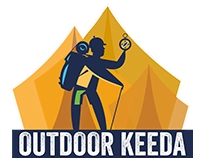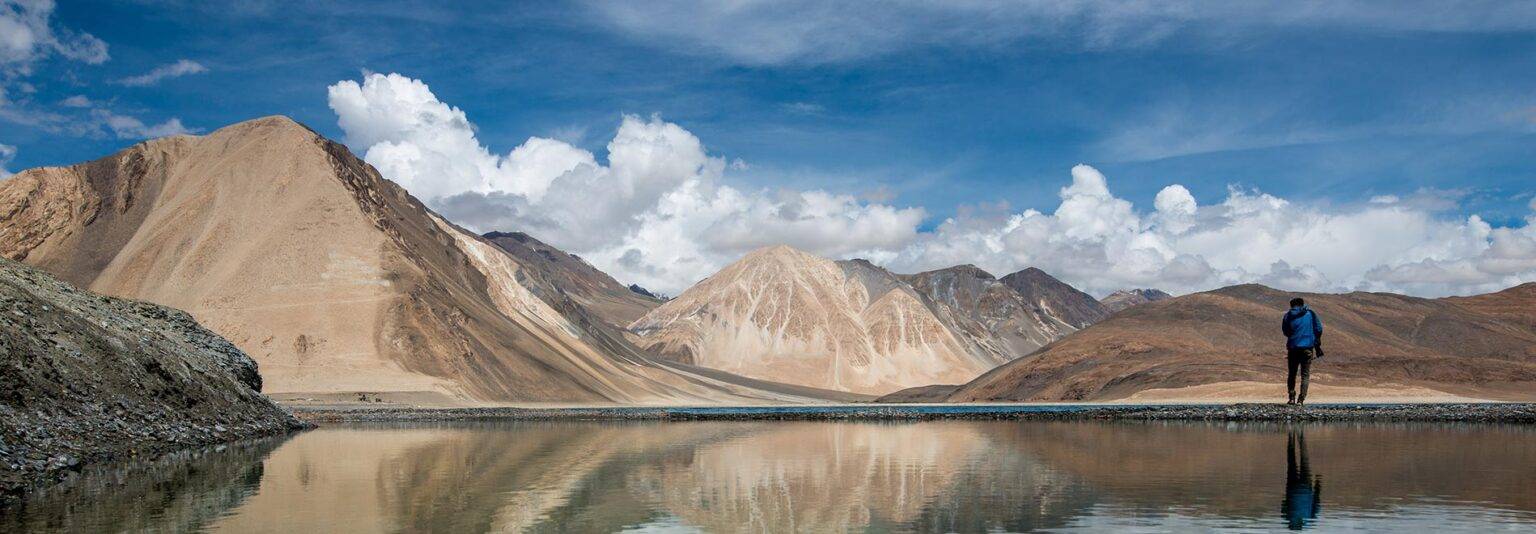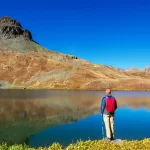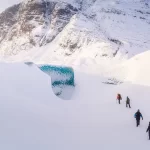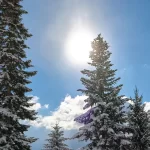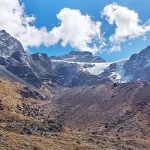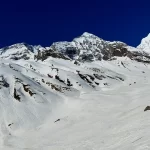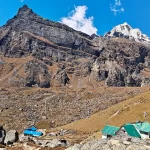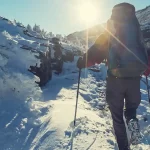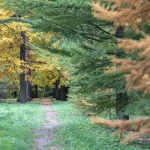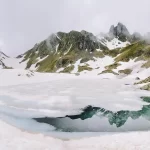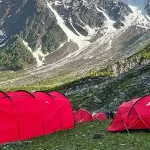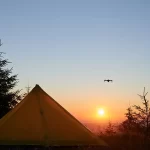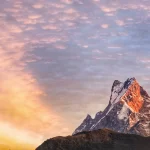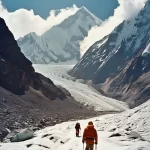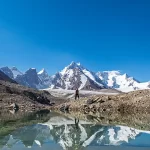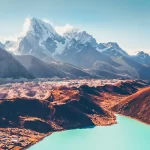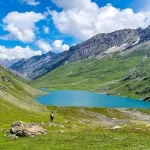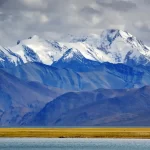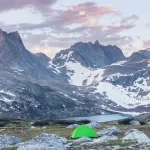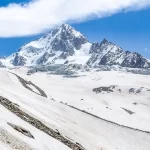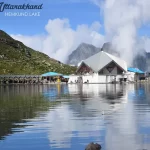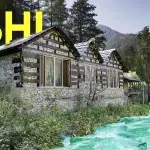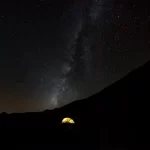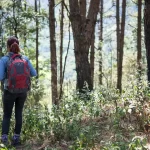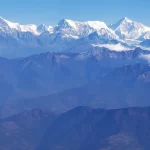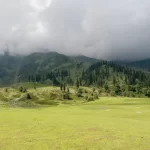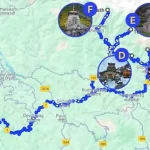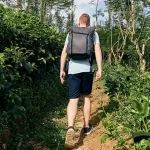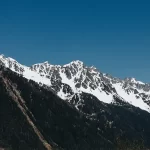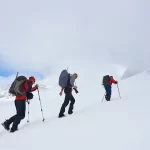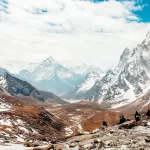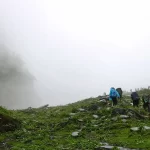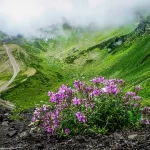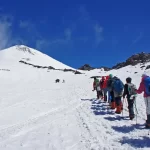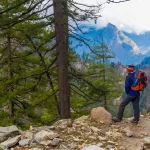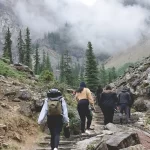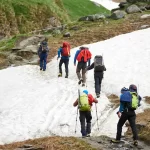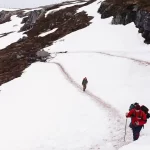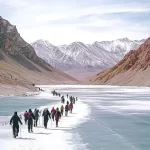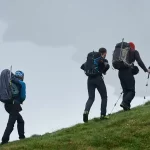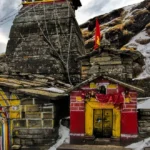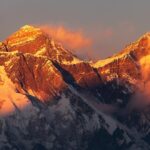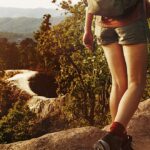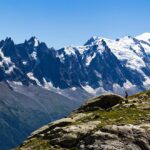The 10 Best Treks in India
“In every walk with nature, one receives far more than he seeks.” – John Muir. This guide is for the adventure kid in you. We’ve curated the top treks in India, providing all the details you need to embark on an unforgettable journey.
1. Stok Kangri Trek
Difficulty
Hard
Duration
9-10 Days
Max Altitude
20,187 ft
Why This Trek is a Must-Do
Stok Kangri is not just a trek; it’s a non-technical mountaineering expedition that allows you to summit a 6,000m peak. It’s one of the most accessible peaks of its height in the world, offering the thrill of a true summit climb without requiring advanced mountaineering skills.
The Experience
“The final summit push starts at midnight. Under a blanket of stars, you see a line of headlamps snaking up the mountain. When the first rays of sun hit the peak and you see the Karakoram and Zanskar ranges unfold below, the exhaustion vanishes. It’s a moment of pure, unadulterated triumph.”
Trekker’s Practical Guide
- Starting Point: Leh. Proper acclimatization in Leh for 2-3 days is mandatory.
- Permits: Requires permits from the Indian Mountaineering Foundation (IMF).
- Water Sources: Available at campsites, but purification is essential.
- Itinerary Snapshot: Leh -> Stok Village -> Chang Ma -> Mankormo -> Base Camp -> Summit -> Base Camp -> Leh.
2. Hampta Pass Trek
Difficulty
Moderate
Duration
4-5 Days
Max Altitude
14,039 ft
Why This Trek is a Must-Do
Hampta Pass is famous for its dramatic crossover. One moment you are in the lush green, flower-laden Kullu valley, and the next, you step into the stark, barren, and awe-inspiring landscape of Lahaul. This contrast is what makes the trek unforgettable.
The Experience
“The moment you cross the pass from the lush green Kullu valley into the stark, arid landscape of Lahaul is something you’ll never forget. It feels like stepping into a different world. The optional day trip to Chandratal Lake is the cherry on top.”
Trekker’s Practical Guide
- Starting Point: Manali.
- Permits: Forest permits are required, usually arranged by the trekking agency.
- Water Sources: Plentiful streams along the trail.
- Itinerary Snapshot: Manali -> Jobra -> Jwara -> Balu ka Ghera -> Shea Goru (via Hampta Pass) -> Chatru.
3. Valley of Flowers Trek
Difficulty
Easy-Moderate
Duration
4-6 Days
Max Altitude
14,100 ft
Why This Trek is a Must-Do
A UNESCO World Heritage site, this valley transforms into a vibrant carpet of alpine flowers during the monsoon season. It’s a fairy-tale landscape, home to rare species like the Blue Primula and the Brahma Kamal.
The Experience
“Walking into the valley is like stepping inside a painting. There are flowers in every imaginable color, stretching as far as the eye can see, with misty mountains as the backdrop. The air is thick with their fragrance. It’s pure magic.”
Trekker’s Practical Guide
- Starting Point: Govindghat.
- Permits: Entry permits are required for the Valley of Flowers National Park.
- Water Sources: Available, but carry your own bottle to refill.
- Itinerary Snapshot: Joshimath -> Govindghat -> Ghangaria -> Valley of Flowers -> Ghangaria -> Hemkund Sahib -> Govindghat.
4. Triund Trek
Difficulty
Easy
Duration
1-2 Days
Max Altitude
9,278 ft
Why This Trek is a Must-Do
Triund is one of the most popular weekend treks in India, and for good reason. It offers breathtaking, up-close views of the mighty Dhauladhar range without being too strenuous, making it perfect for beginners and those short on time.
The Experience
“After a few hours of climbing through rhododendron forests, you emerge onto a vast green meadow. The view of the snow-capped Dhauladhar peaks rising right in front of you is simply jaw-dropping. Camping here overnight under a star-studded sky is an essential Himalayan experience.”
Trekker’s Practical Guide
- Starting Point: McLeod Ganj or Dharamkot.
- Permits: No special permits needed, but registration may be required.
- Water Sources: Small tea shops along the way offer water and snacks.
- Itinerary Snapshot: McLeod Ganj -> Triund (overnight camp) -> McLeod Ganj.
5. Tosh Valley Trek
Difficulty
Moderate
Duration
4-5 Days
Max Altitude
13,500 ft (approx)
Why This Trek is a Must-Do
Located in the serene Parvati Valley, the Tosh Valley trek takes you through dense pine forests, alongside the roaring Tosh river, and into beautiful meadows with views of peaks like Papasura and White Sail.
The Experience
“The trek starts from the charming village of Tosh. As you climb higher, the valley opens up to reveal stunning glaciers and waterfalls. The feeling of solitude and being deep within the Himalayas is profound here.”
Trekker’s Practical Guide
- Starting Point: Barshaini, near Kasol.
- Permits: Generally not required for the standard route.
- Water Sources: Many streams and waterfalls along the trail.
- Itinerary Snapshot: Barshaini -> Tosh Village -> Buddhaban -> Sharam Thach -> Animal Pass Base.
6. Kheerganga Trek
Difficulty
Easy
Duration
2 Days
Max Altitude
13,100 ft
Why This Trek is a Must-Do
This trek is legendary for its final reward: a natural hot water spring (Parvati Kund) at the top. After a day of trekking, soaking in the hot springs surrounded by snow-capped peaks is an experience like no other.
The Experience
“The trail is beautiful, winding through forests and past waterfalls. But the highlight is undoubtedly the hot springs. The feeling of tired muscles relaxing in the warm, sulfurous water while gazing at the Himalayas is pure bliss.”
Trekker’s Practical Guide
- Starting Point: Barshaini, near Kasol.
- Permits: Not required.
- Water Sources: Available at cafes along the trail.
- Itinerary Snapshot: Barshaini -> Kheerganga (overnight) -> Barshaini.
7. Har Ki Doon Trek
Difficulty
Easy-Moderate
Duration
7 Days
Max Altitude
12,000 ft
Why This Trek is a Must-Do
Known as the “Valley of Gods,” this cradle-shaped valley is steeped in mythology and boasts stunning views of the Swargarohini peaks. The trail takes you through ancient villages, offering a glimpse into local Garhwali culture.
The Experience
“Walking through villages that are over 3,000 years old is a humbling experience. The valley itself is breathtaking, with views of the Jaundhar glacier and the peaks where the Pandavas are said to have ascended to heaven.”
Trekker’s Practical Guide
- Starting Point: Sankri.
- Permits: Forest permits are required.
- Water Sources: Abundant throughout the trek.
- Itinerary Snapshot: Sankri -> Taluka -> Osla -> Har Ki Doon -> Osla -> Sankri.
8. Roopkund Trek
Difficulty
Moderate-Hard
Duration
7-9 Days
Max Altitude
16,499 ft
Why This Trek is a Must-Do
This trek is famous for its destination: a mysterious glacial lake where hundreds of ancient human skeletons can be seen. Beyond the mystery, the trek offers stunning campsites, vast meadows (Ali and Bedni Bugyal), and close-up views of peaks like Trishul and Nanda Ghunti.
The Experience
“The journey through the meadows of Ali and Bedni Bugyal is itself worth the trek. Reaching the lake and seeing the skeletons is a surreal and chilling experience that sparks endless questions about the past. It’s a trek that combines adventure with a deep sense of mystery.”
Trekker’s Practical Guide
- Starting Point: Lohajung.
- Permits: Forest permits are necessary.
- Water Sources: Available at campsites.
- Itinerary Snapshot: Lohajung -> Didna Village -> Ali Bugyal -> Patar Nachauni -> Bhagwabasa -> Roopkund -> Patar Nachauni -> Lohajung.
9. Chandratal Lake Trek
Difficulty
Easy-Moderate
Duration
5-7 Days
Max Altitude
14,100 ft
Why This Trek is a Must-Do
Chandratal, or the “Moon Lake,” is a stunning high-altitude lake in the Spiti region. Its crescent shape and brilliant blue color change with the light of the day, making it a photographer’s paradise. The trek combines the beauty of Lahaul with the starkness of Spiti.
The Experience
“Camping near the lake under the Milky Way is an unforgettable experience. The lake itself seems to have a life of its own, its colors shifting from turquoise to emerald green. The reflections of the surrounding peaks on its still surface are picture-perfect.”
Trekker’s Practical Guide
- Starting Point: Manali.
- Permits: Permits may be required for crossing Rohtang Pass.
- Water Sources: Carry sufficient water, especially for the final stretch to the lake.
- Itinerary Snapshot: Manali -> Chika -> Balu ka Ghera -> Shea Goru -> Chatru -> Chandratal -> Manali.
10. Nag Tibba Trek
Difficulty
Easy
Duration
2-3 Days
Max Altitude
9,915 ft
Why This Trek is a Must-Do
The highest peak in the lesser Himalayan region of Uttarakhand, Nag Tibba is an ideal weekend trek. It offers stunning, 360-degree views of Himalayan peaks like Swargarohini, Bandarpoonch, Kedarnath, and Gangotri.
The Experience
“For a relatively easy trek, the summit view is extraordinary. It feels like you are on top of the world, with the entire Himalayan range laid out before you. It’s the perfect introduction to the magic of Himalayan trekking.”
Trekker’s Practical Guide
- Starting Point: Pantwari.
- Permits: Not required.
- Water Sources: Limited after the campsite, so carry enough for the summit push.
- Itinerary Snapshot: Pantwari -> Nag Tibba Base Camp (overnight) -> Nag Tibba Summit -> Pantwari.
Beginner’s Guide to Trekking in India
Trekking vs. Hiking: What’s the Difference?
Hiking is typically walking on well-marked, manmade trails for a single day or multiple days. It requires a minimal level of fitness. Trekking is a more rigorous journey, often on unexplored paths through wilderness, lasting several days. It demands higher physical and mental endurance.
Know Your Trails: Trek Difficulty
- Easy: 2-3 days, 4-5 km per day. Great for beginners (e.g., Triund, Nag Tibba).
- Moderate: 5-7 days, 5-6 hours of walking per day. Requires reasonable fitness (e.g., Hampta Pass, Valley of Flowers).
- Hard: More than a week, facing challenging terrain and high altitudes. Requires prior trekking experience and excellent fitness (e.g., Stok Kangri, Roopkund).
Prepare and Prevent: Key Tips
- Physical Fitness: Build stamina with cardio and strength training, focusing on your back and legs.
- Breathing Exercises: Practice yoga or pranayama to improve lung capacity for high altitudes.
- Pack Smart: Carry only essentials. A heavy bag can ruin a trek.
- Stay Healthy: Avoid smoking and alcohol before and during the trek to keep your body in peak condition.
Essential Trekking Gear Checklist
- Good quality, broken-in trekking shoes and several pairs of socks.
- Layered woolen and synthetic clothing (avoid cotton).
- A well-fitting rucksack (50-60 liters).
- A suitable sleeping bag for the expected temperatures.
- Headlight/torch with extra batteries.
- Personal medical kit and toiletries.
- Water bottle/hydration pack and a water purification system.
- High-energy snacks (nuts, energy bars).
- Sunscreen, sunglasses, and a hat.
- A reliable rope, swiss knife, and compass/GPS device.
Frequently Asked Questions
Q1. How much does a typical Himalayan trek cost?
Ans. The cost of a trek in India can vary widely. For a 5-7 day moderate trek organized by a reputable agency, you can expect to pay anywhere from ₹10,000 to ₹25,000 per person. This usually includes guides, porters, food, tents, and permits. Costs for harder, longer, or more remote treks like Stok Kangri can be significantly higher. DIY trekking can be cheaper but is only recommended for experienced trekkers.
Q2. How physically fit do I need to be for a moderate trek?
Ans. For a moderate trek, you should have a good level of cardiovascular fitness. A good benchmark is being able to run 5 kilometers in 30-35 minutes or comfortably walk for 5-6 hours with a light daypack. It’s also important to incorporate strength training for your legs and core. We highly recommend starting your fitness preparation at least 1-2 months before your trek.
Q3. Is it safe for solo female travelers to trek in India?
Ans. Yes, it can be very safe, especially when planned properly. The safest option for solo female travelers is to join a group with a reputable and well-reviewed trekking agency. These agencies have certified guides and established safety protocols. While some popular short treks like Triund can be done with caution, going with a group is highly recommended for safety and support in more remote regions.
Q4. What is Acute Mountain Sickness (AMS) and how can I prevent it?
Ans. Acute Mountain Sickness (AMS) is an illness that can affect climbers, hikers, and travelers at high altitudes, typically above 8,000 feet (2,500 meters). Symptoms include headache, nausea, dizziness, and fatigue. The best prevention is proper acclimatization. This means ascending slowly, allowing your body to adjust to the lower oxygen levels. Staying well-hydrated (drink 4-5 liters of water daily), avoiding alcohol, and eating a high-carbohydrate diet are crucial. For some high-altitude treks, a doctor may prescribe medication like Diamox as a prophylactic.
Q5. Which trek from this list is the best for a first-timer?
Ans. For an absolute beginner, the Triund Trek (#4) is an excellent choice. It’s short (1-2 days), easily accessible from McLeod Ganj, and offers incredible views for the effort involved. For a beginner looking for a slightly longer experience in a more remote setting, the Kheerganga Trek (#6) or Har Ki Doon Trek (#7) are fantastic options that are rewarding yet manageable.
